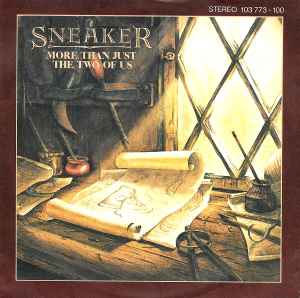
"Me and your mama had some troubles," he sings to Gia, "There's been a whole lotta things on our minds / But lately when we look at you / We know that we've been wastin' time." When he loops through thetitle over and over again at the song's end, you can hear the warmth pouring out of his voice and it's a beautiful, heart-rendering moment that simply cannot be bettered. While it was revised for his 1980 solo effort, "Real Eyes," and dedicated to his daughter Gia Louise, we're suckers for a stripped-down piano-and-voice version featured on the 2014 compilation "Nothing New." Scott-Heron's gruff and earnest voice plays against the breezy, simple jazz chords to create a genuinely sweet, sentimental moment that serves as a sharp contrast to the political rhetoric he is best known for. At Google, for instance, a number of conference rooms, which have traditionally been named after scientists, were renamed after women scientists to balance out the gender representation.Of all the songs on this list, it's fair to say that this Gil Scott-Heron album cut, initially appearing on his 1974 collaborative record with Brian Jackson called Winter in America," is not only the least well known but also arguably the best song of the bunch.

“Microaggressions are the brief and commonplace daily verbal, behavioral, and environmental indignities, whether intentional or unintentional, that communicate hostile, derogatory, or negative racial, gender, sexual-orientation, and religious slights and insults,” Sue writes in his book, Microaggressions in Everyday Life.īecoming hyperconscious of the language you use, who you choose to interact with and how during the day can cue you into how your language and behavior affects the people around you. Derald Wing Sue, professor of counseling psychology at Columbia University calls these signals “microagressions,” which can have a profound and detrimental effect on the people around us. To better understand how you and your workplace are handling such issues, look at the data available and what it’s telling you.Īll throughout the day, we send subtle messages to the people around us through our body language, word choice and behavior. After a research report by Spark Summit called out the company for over-representing white men in its Google Doodles with only 17% of doodles honoring women and less than 5% honoring women of color, the company realized it had to be more conscious of the decisions it was making. It’s easy to deny personal biases, but disproving data isn’t so simple. “All the research out there shows unstructured interviews are the worst way to make a hiring decision.” Let The Numbers Speak For Themselves

“Make sure all people answer the same exact questions,” he says. Welle sites the study as a case for standardizing interview questions. They found that gender biases in choosing between a male and female candidate for a police chief position, for example, were reduced when those making the selection had set up criteria before reviewing applicants. One way to do that, the Stanford researchers found, is to create clear criteria for evaluating candidates before looking at their qualifications. This isn’t to say that all interviews have to be done blind of course, but that refocusing on the skills that define a candidate can help eliminate biases we may be bringing with us to our decision-making. Focus On Skills And Eliminate DistractionsĪ study through the Clayman Institute of Gender Studies at Stanford found that the number of women musicians in orchestras went up from 5% to 25% since the 1970s–a shift that happened when judges began auditioning musicians behind screens so that they could not see them. We all have them.” Is there a way to change unconscious biases that influence who we hire, promote, and most value at work? There’s certainly no simple approach, but according to Welle, there are four places you can begin. “It doesn’t matter if you’re male or female. “Those of us who are raised in a cultural context have those implicit associations,” says Welle in a Google workshop on the topic. This translates into a huge issue in the workplace. And the disparity isn’t just happening in academia.

“Despite efforts to recruit and retain more women, a stark gender disparity persists within academic science,” the researchers wrote. Participants, including both men and women, rated the male candidate as more qualified and were willing to pay him a higher starting salary than his female counterpart. Take the study out of Yale University that asked science researchers to rate two candidates for a lab manager position–a male and a female–both with the same qualifications. But in reality, most of us fall woefully short of our inflated self-perception. Most of us believe that we are ethical and unbiased.


 0 kommentar(er)
0 kommentar(er)
